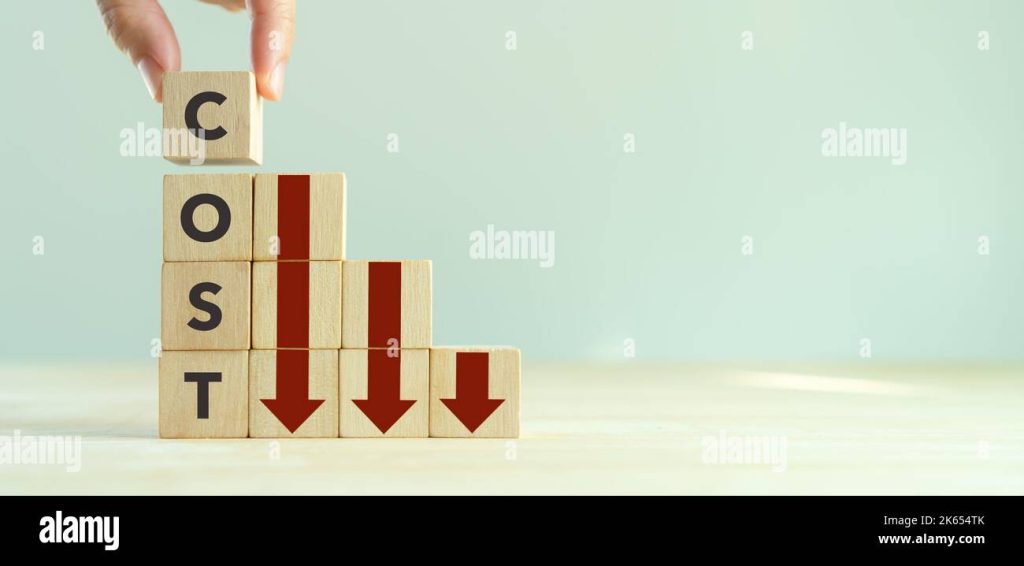
Cost containment is paramount for success in lean manufacturing operations. A company’s ability to control its expenditures directly impacts its bottom line and overall competitive standing. This article delves into strategic approaches for reducing expenses while maintaining operational effectiveness in the lean manufacturing industry. We’ll explore critical areas for cost reduction, including streamlined processes, technology integration, and intelligent procurement strategies. This comprehensive guide will demonstrate how to effectively implement cost containment strategies, providing tangible examples and data-driven insights for optimizing your lean manufacturing operations.
Understanding the Importance of Cost Containment in Lean Manufacturing
Defining Cost Containment in Lean Operations
Cost containment in lean manufacturing encompasses all activities aimed at controlling and reducing operational expenses without compromising the company’s ability to meet quality standards or achieve production goals. It’s a continuous process that requires a holistic approach, leveraging various strategies across the entire value chain. The goal is to optimize resources and processes while minimizing waste and maximizing efficiency. This approach often necessitates a shift in mindset, moving away from reactive cost-cutting measures to proactive strategies aimed at prevention and optimization.
The Challenges of Cost Containment
Many manufacturers face numerous hurdles in their efforts to implement cost containment programs. A primary challenge is identifying the root causes of expenditure inefficiencies. Identifying these areas requires deep analysis and collaboration across different departments. Another challenge is aligning cost-reduction strategies with the company’s long-term objectives and strategic vision. Ensuring that cost reductions do not compromise the quality of products or the satisfaction of customers is a key concern.
Streamlining Processes for Cost Reduction
Lean Principles for Process Improvement
Lean manufacturing principles emphasize waste reduction, which directly impacts cost containment. Applying lean principles helps identify and eliminate non-value-added activities within processes. By examining value streams, companies can identify bottlenecks and inefficiencies, leading to significant cost savings. Techniques such as Kaizen events and Value Stream Mapping (VSM) can be invaluable tools for process improvement. Data analysis is essential to identify patterns, trends, and opportunities for optimization.
Example: Implementing a Kanban System
A manufacturing company implemented a Kanban system for inventory management. Previously, they experienced substantial inventory holding costs. Using Kanban, the company reduced holding costs by 20% by matching material production with demand. This demonstrates how a seemingly simple process improvement can have profound effects on overall cost containment.
Technology Integration for Enhanced Efficiency
Utilizing Automation and Robotics
Implementing automation and robotics is a proven strategy for enhancing efficiency and reducing costs in manufacturing. Automated systems can handle repetitive tasks faster and with higher precision than human operators, leading to reduced labor costs and increased output. Modern robotics and automated equipment are designed to be flexible and adaptable to the unique needs of different manufacturing processes.
Data-Driven Decision Making
Integrating data analysis tools is crucial for cost containment in lean operations. The analysis of production data from different stages of the process, combined with real-time monitoring, can provide invaluable insights into potential problem areas and opportunities for optimization. This allows companies to make data-driven decisions regarding equipment maintenance, production scheduling, and resource allocation.
Strategic Sourcing for Cost Reduction
Identifying Value-Added Suppliers
Identifying value-added suppliers is paramount to cost containment. Building strong relationships with suppliers is essential. This allows for the ability to negotiate better contracts and access favorable payment terms. Companies can also explore alternative sourcing strategies to identify cost savings and optimize supply chains.
Negotiation and Contract Management
Negotiating favorable contract terms with suppliers and implementing robust contract management systems can lead to considerable cost reductions over time. Regularly evaluating supplier performance and seeking opportunities to optimize contracts is key to continued cost savings. A strategic, proactive approach is essential for achieving long-term success.
Budgeting and Expense Monitoring
Implementing a Robust Budgeting System
Effective budgeting and financial management are vital components of cost containment. This encompasses creating accurate budgets that align with the company’s strategic objectives and monitoring actual expenses against the budget. This provides a clear picture of variances and allows for prompt corrective action.
Implementing Cost Reduction Initiatives
Regularly evaluate all operating expenses to look for opportunities to lower costs. This could involve seeking alternative suppliers, optimizing material usage, and reducing energy consumption. Tracking key metrics regularly is essential to verify the effectiveness of these initiatives. A dedicated team should be responsible for identifying and implementing cost reduction measures.
How do lean principles influence cost containment strategies?
Lean principles emphasize eliminating waste in all its forms, encompassing waste in production processes, inventory holding, unnecessary movement of goods, and rework. By identifying and addressing waste, manufacturers can reduce expenses and increase efficiency. For example, optimizing inventory management can significantly decrease the cost of holding inventory and related storage space. Through process analysis, manufacturers can effectively identify bottlenecks in their production lines, allowing them to make timely adjustments, ultimately saving costs and minimizing disruption. Lean methodologies offer a structured, systematic approach to waste identification and elimination, thereby directly supporting cost containment objectives in manufacturing.
Frequently Asked Questions
What are some specific strategies for cost containment?
One approach to cost containment is implementing lean manufacturing principles, which can help identify and eliminate waste. These methods focus on improving processes by eliminating bottlenecks and streamlining workflows. Companies can also explore strategies for reducing material costs by evaluating supply chain efficiency and negotiating better deals with suppliers. Strategic decisions such as optimizing inventory management, by implementing efficient planning and forecasting models can also significantly impact costs. By analyzing existing processes, manufacturers can identify areas of improvement and implement strategies that lead to cost reductions, while maintaining production quality.
In conclusion, cost containment strategies are crucial for lean business operations in the manufacturing industry. By implementing a holistic approach encompassing process improvement, technology adoption, and strategic sourcing, companies can effectively reduce expenses without compromising quality or productivity. The key takeaway is to prioritize a proactive, data-driven approach that consistently monitors and adjusts cost-reduction measures. To explore these strategies further and develop a customized cost containment plan for your manufacturing business, schedule a free consultation today.